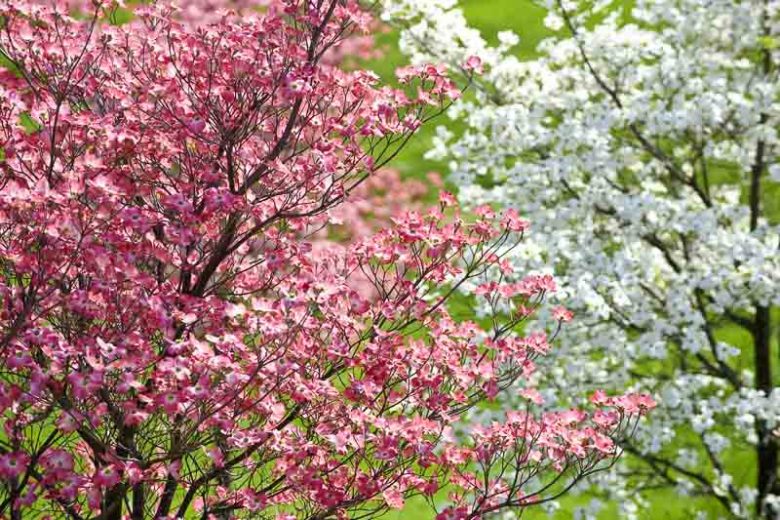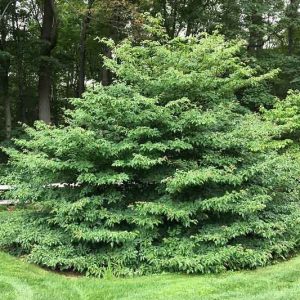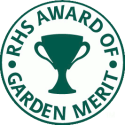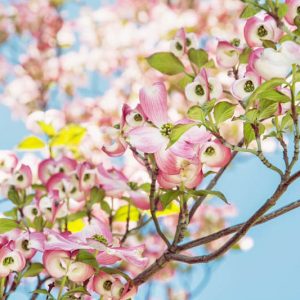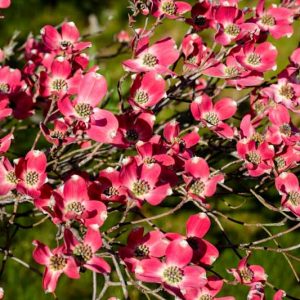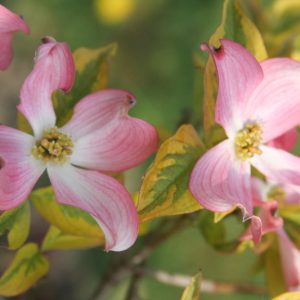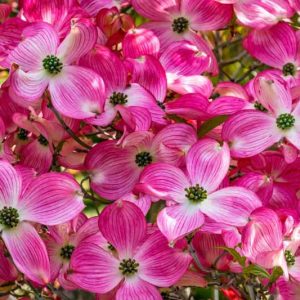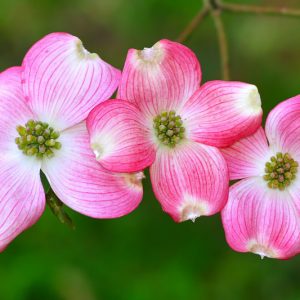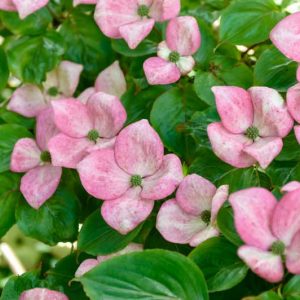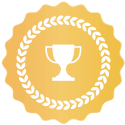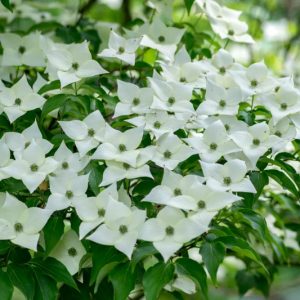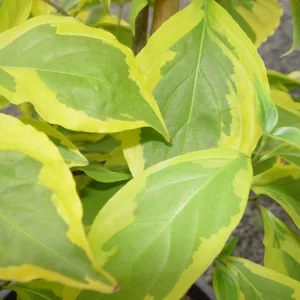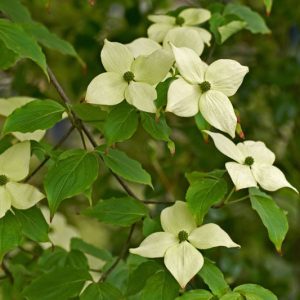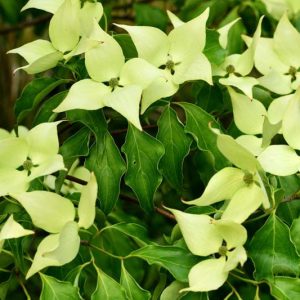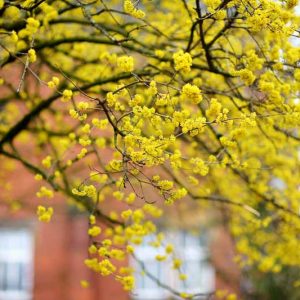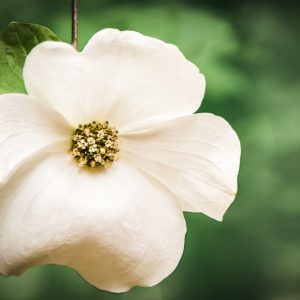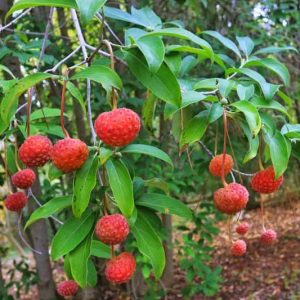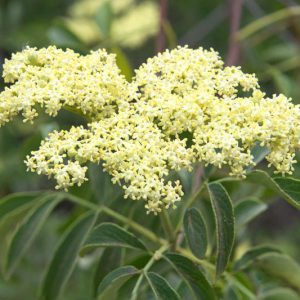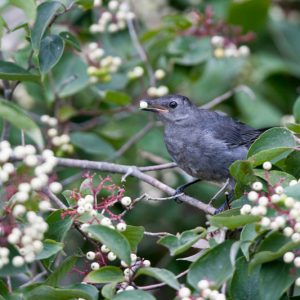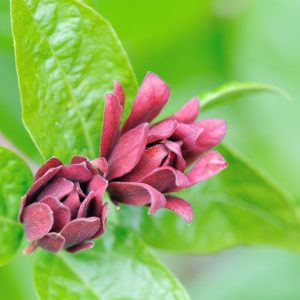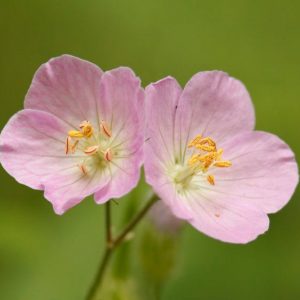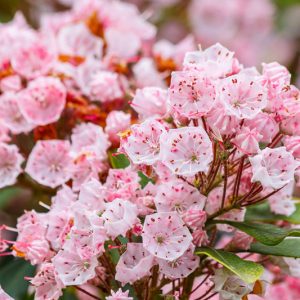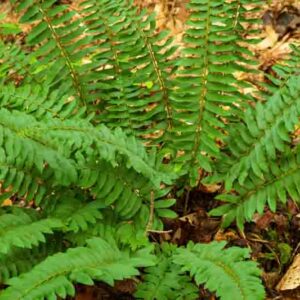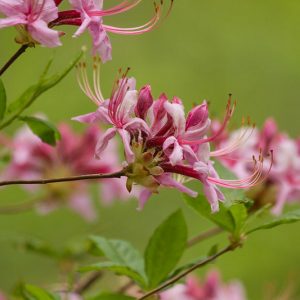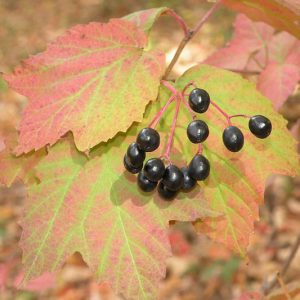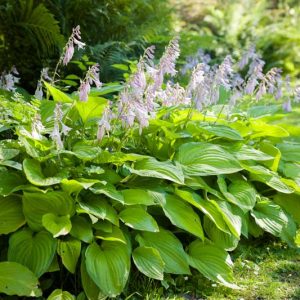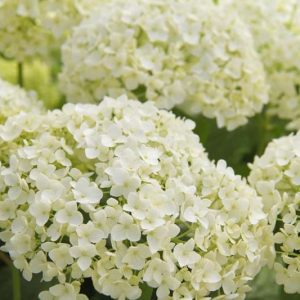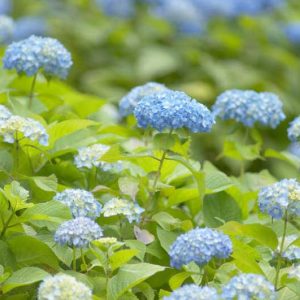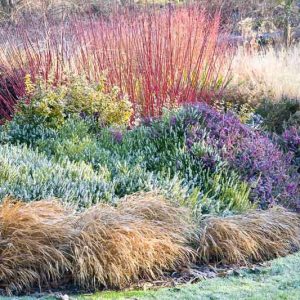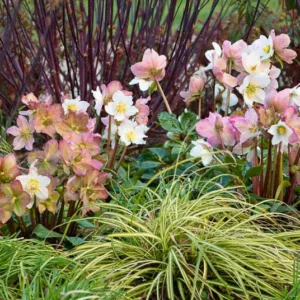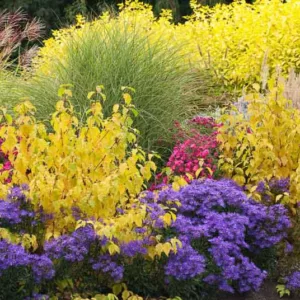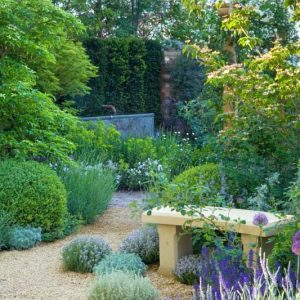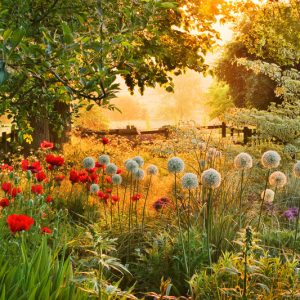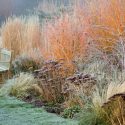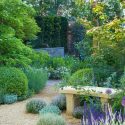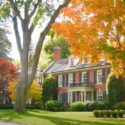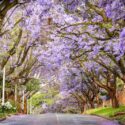What is a Dogwood Tree?
A dogwood tree is a flowering, deciduous tree belonging to the genus Cornus within the family Cornaceae. Dogwoods are native to various regions across North America, Europe, and Asia. They are known for their showy, petal-like bracts that resemble flowers, attractive foliage, vibrant fall colors, and often colorful or exfoliating bark.
Growth Habit and Size: Dogwood trees have a moderate growth rate and typically reach a height of 15-30 feet (4.5-9 meters), depending on the species. They often have a horizontal branching habit, giving them a rounded or flat-topped appearance.
Flowers and Blooming Season: Dogwood flowers are actually small, yellowish-green flowers clustered in the center of showy bracts, which are modified leaves that resemble petals. The bracts can be white, pink, or yellow. The blooming season varies depending on the species but generally occurs in spring, from April to June.
Hardiness: Dogwoods are hardy in USDA zones 3 to 9, depending on the species.
Uses: Dogwood trees are often used as ornamental plants in gardens and landscapes for their attractive flowers, fall color, and interesting bark. Some species, like the Cornelian cherry, have edible fruit that can be used to make jams, jellies, and beverages. The wood of dogwood trees is dense and strong, making it valuable for crafting tool handles, golf club heads, and other items that require durability.
Why Should I Grow a Dogwood Tree?
There are several reasons to consider growing a dogwood tree in your garden or landscape:
Aesthetic appeal: Dogwood trees are known for their showy spring flowers. These trees can add a splash of color to your garden and serve as a focal point during the flowering season.
Year-round interest: In addition to the beautiful spring blooms, dogwoods have attractive foliage that turns various shades of red, orange, or purple in the fall. Some species also have unique bark patterns or colors, such as the redtwig dogwood (Cornus sericea) or the kousa dogwood (Cornus kousa), providing visual interest throughout the year.
Wildlife attraction: Dogwood trees attract a variety of pollinators, including bees, butterflies, and other insects, which feed on their nectar and pollen. They also produce berries (technically drupes) in late summer or early fall that are attractive to birds and other wildlife. They provide an important food source for many species, so planting a dogwood tree can contribute to a healthy ecosystem in your garden.
Size and versatility: Dogwood trees are typically small to medium-sized, making them suitable for most gardens, even those with limited space. They can be used as specimen trees, planted in groups, or incorporated into mixed borders.
Shade tolerance: Many species can tolerate partial shade, making them a good choice for planting under taller trees or in areas with dappled sunlight.
Low maintenance: Dogwoods are generally low-maintenance trees that require only occasional pruning and are not particularly susceptible to pests or diseases.
